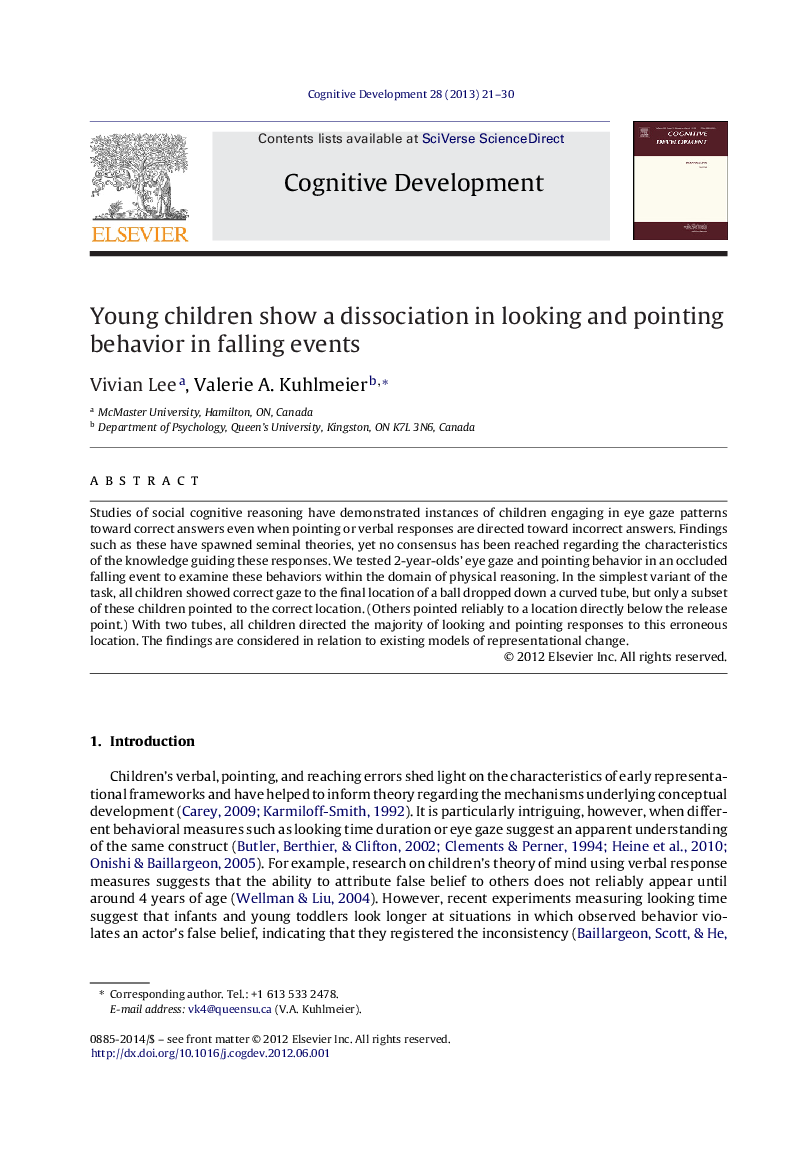| Article ID | Journal | Published Year | Pages | File Type |
|---|---|---|---|---|
| 916546 | Cognitive Development | 2013 | 10 Pages |
Studies of social cognitive reasoning have demonstrated instances of children engaging in eye gaze patterns toward correct answers even when pointing or verbal responses are directed toward incorrect answers. Findings such as these have spawned seminal theories, yet no consensus has been reached regarding the characteristics of the knowledge guiding these responses. We tested 2-year-olds’ eye gaze and pointing behavior in an occluded falling event to examine these behaviors within the domain of physical reasoning. In the simplest variant of the task, all children showed correct gaze to the final location of a ball dropped down a curved tube, but only a subset of these children pointed to the correct location. (Others pointed reliably to a location directly below the release point.) With two tubes, all children directed the majority of looking and pointing responses to this erroneous location. The findings are considered in relation to existing models of representational change.
► We examine children's representational change using an occluded falling event. ► We measure eye gaze and pointing behavior to the final location of a dropped ball. ► Children who pointed incorrectly predicted the location correctly with eye gaze. ► Accurate representations are first available to system guiding eye gaze.
